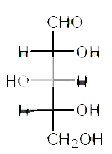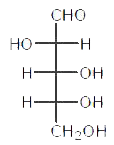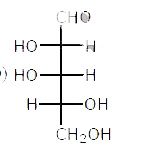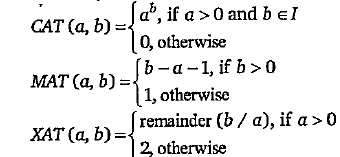According to CIP rules the configuration of chiral carbon atoms in D- (+)-Glucose are
(A)2S, 3S, 4R, 5S
(B)2S, 3S, 4R, 5R
(C)2R, 3R, 4S, 5S
(D) 2R, 3S, 4R, 5R
Step by step video & image solution for According to CIP rules the configuration of chiral carbon atoms in D- (+)-Glucose are (A)2S, 3S, 4R, 5S (B)2S, 3S, 4R, 5R (C)2R, 3R, 4S, 5S (D) 2R, 3S, 4R, 5R by Chemistry experts to help you in doubts & scoring excellent marks in Class 12 exams.
Similar Questions
If R=x2+2x−3 and S=x−1x, then find
(a)R+S
(b)R−S
(c)R.S
(d)RSView SolutionDivide Rs. .671 among A, B and C such that if their shares be increased Rs.3, Rs. 7 and Rs. 9 respectively the remainder shall be in the ratio 1 :2 : 3. Rs.110, Rs.220, Rs.336 b. Rs 112, Rs.223, Rs.336 c. Rs.105, Rs.223, Rs.330 d. none of these
View Solution
Knowledge Check
- Question 1 - Select One
Which of the following sugars has the configuration (2S 3R, 4R) ?
A B
B C
C D
D
- Question 2 - Select One
A: Mn shows exceptional M.P. in 3d series
R: Its outer configuration is 4s23d5AIf both Assertion & Reason are true and the reason is the correct explanation of the assertion, then mark (1)BIf both Assertion & Reason are true but the reason is not the correct explanation of the assertion, then mark (2)CIf Assertion is true statement but Reason is false, then mark (3)DIf both Assertion and Reason are false statements, then mark (4) - Question 3 - Select One
The following are the steps in finding the matrix B, if B+(2345)=(5432). Arrange them in sequential order.
(A) ∴(pqrs)+(2345)=(5432)
(B) Let B=(pqrs)
(C) (p+2q+3r+4s+5)=(5432)
(D) P+2=5,q+3=4,r+4=3,s+5=2
⇒p=3,q=1,r=−1,s=−3
(E) ∴B=(31−1−3)ABACDEBBADCECBDCAEDBADEC
Anu is a working partner and I3imla is a sleeping partner in a business. Anu puts in Rs. 5000 and Bimla puts in Rs. 6000. Anu receives 12.5% of the profit for managing the business and the rest is divided in proportion to their capitals. What does of a profit of Rs. 880? Rs.400, Rs.480 b. Rs.450, Rs.430 c. Rs.460, Rs.420 d. Rs.470, Rs.410
View SolutionSr denotes the sum of the first r terms of an AP.Then S3d:(S2n−Sn) is -
View SolutionIf Sr denotes the sum of the first r terms of an A.P. Then, S3n :(S2n−Sn) is n (b) 3n (c) 3 (d) none of these
View SolutionShow that the radii of the three escribed circles of a triangle are roots of the equation, x3−x2(4R+r)+xs2−rs2=0.
View Solution
XAT(r,s)MAT(r,s)=2
(i) r = 3, s = 5
(ii) r = -3, s = -5View Solution
